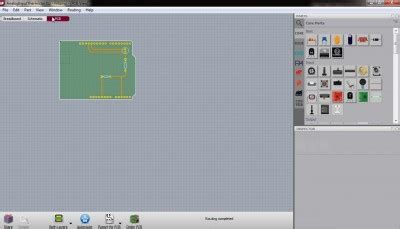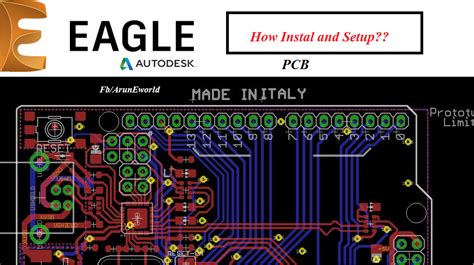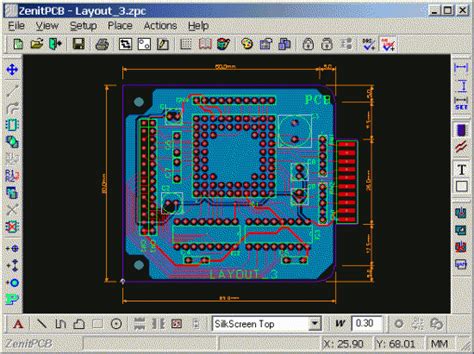Introduction to PCB software
Printed Circuit Board (PCB) design is a crucial aspect of electronic product development. PCB software plays a vital role in the design process, enabling engineers and designers to create complex layouts and schematics efficiently. Among the various PCB software options available in the market, Pads PCB software stands out for its powerful features and user-friendly interface.
What is Pads PCB Software?
Pads PCB software is a comprehensive suite of tools developed by Mentor Graphics, a Siemens Business, for designing and analyzing printed circuit boards. It offers a complete set of capabilities, including schematic capture, layout design, signal and power integrity analysis, and manufacturing output generation.
Key Features of Pads PCB Software
- Schematic Capture:
- Easy-to-use schematic editor
- Hierarchical design support
- Extensive component libraries
-
Electrical rule checking (ERC)
-
Layout Design:
- Powerful placement and routing tools
- Constraint-driven design
- High-speed design capabilities
-
3D visualization and collision detection
-
Signal and Power Integrity Analysis:
- Pre-layout and post-layout analysis
- Impedance control and matching
- Crosstalk analysis
-
Power distribution network (PDN) analysis
-
Manufacturing Output Generation:
- Gerber and drill file generation
- ODB++ output
- IPC-2581 support
- Design for manufacturing (DFM) checks
Benefits of Using Pads PCB Software
Increased Productivity
Pads PCB software streamlines the design process, allowing engineers to work more efficiently. Its intuitive user interface and automated features help reduce design time and minimize errors. The software’s extensive component libraries and reuse capabilities further enhance productivity by eliminating the need to create components from scratch.
Improved Design Quality
With Pads PCB software, designers can ensure high-quality PCB designs. The software’s constraint-driven design approach helps maintain design integrity by enforcing rules and constraints throughout the design process. Signal and power integrity analysis tools enable designers to identify and resolve issues early in the design cycle, reducing the risk of costly redesigns.
Seamless Collaboration
Pads PCB software facilitates collaboration among design teams. It supports multi-user design, allowing multiple engineers to work on the same project simultaneously. The software’s version control and design data management features ensure that all team members have access to the latest design data and can track changes effectively.
Enhanced Manufacturing Readiness
Pads PCB software generates manufacturing-ready output files, such as Gerber and drill files, ensuring smooth communication with PCB fabrication and assembly providers. The software’s design for manufacturing (DFM) checks help identify potential manufacturing issues early, reducing the likelihood of production delays and increasing overall manufacturing yield.

Getting Started with Pads PCB Software
System Requirements
Before installing Pads PCB software, ensure that your computer meets the minimum system requirements:
| Component | Minimum Requirement |
|---|---|
| Operating System | Windows 10 (64-bit) |
| Processor | Intel Core i5 or equivalent |
| RAM | 8 GB |
| Graphics Card | OpenGL 3.3 compatible with 1 GB VRAM |
| Storage | 10 GB free disk space |
Installation Process
To install Pads PCB software, follow these steps:
- Download the Pads PCB software installation package from the Mentor Graphics website.
- Double-click the installation file to start the installation wizard.
- Accept the license agreement and choose the installation directory.
- Select the desired components to install.
- Follow the on-screen instructions to complete the installation process.
Licensing Options
Pads PCB software offers various licensing options to suit different user needs:
- Perpetual License: A one-time purchase that grants permanent access to the software.
- Subscription License: A flexible, time-based licensing model with monthly or annual options.
- Network License: Allows multiple users to share licenses across a network.
Choose the licensing option that best fits your budget and usage requirements.

Pads PCB Software Tutorials and Resources
To help users get started with Pads PCB software and enhance their skills, Mentor Graphics provides a wide range of tutorials and resources:
Online Documentation
The Pads PCB software documentation is available online, providing detailed information on software features, workflows, and best practices. Users can access the documentation through the Mentor Graphics website or directly from within the software.
Video Tutorials
Mentor Graphics offers a collection of video tutorials that cover various aspects of Pads PCB software. These tutorials are designed to help users learn the software quickly and efficiently. Topics include:
- Schematic capture basics
- Layout design techniques
- Signal and power integrity analysis
- Manufacturing output generation
Training Courses
Mentor Graphics provides training courses for Pads PCB software, both online and in-person. These courses are conducted by experienced instructors and cover a range of topics, from beginner to advanced levels. Users can choose from standard courses or request customized training tailored to their specific needs.
User Community and Forums
Pads PCB software has an active user community where designers can connect, share knowledge, and seek assistance. The Mentor Graphics forums provide a platform for users to ask questions, discuss best practices, and collaborate with fellow designers.

Advanced Topics in Pads PCB Software
High-Speed Design Considerations
Designing high-speed PCBs requires special considerations to ensure signal integrity and minimize electromagnetic interference (EMI). Pads PCB software offers advanced features to address these challenges:
- Impedance control and matching: The software allows designers to define and manage impedance requirements for critical signals, ensuring proper termination and reducing reflections.
- Crosstalk analysis: Pads PCB software can simulate and analyze crosstalk between adjacent traces, helping designers optimize trace spacing and minimize signal interference.
- Differential pair routing: The software supports automated differential pair routing, ensuring matched lengths and minimizing skew for high-speed differential signals.
Power Integrity Analysis
Maintaining a stable and clean power supply is crucial for the proper functioning of electronic devices. Pads PCB software provides tools for power integrity analysis:
- Power distribution network (PDN) analysis: The software can simulate and analyze the PDN to identify voltage drops, current density, and potential hotspots.
- Decoupling capacitor placement: Pads PCB software assists in the optimal placement of decoupling capacitors to minimize power supply noise and ensure stable voltage levels.
- Voltage regulator module (VRM) design: The software supports the design and integration of VRMs for efficient power management.
Thermal Analysis
Thermal management is essential to ensure the reliability and longevity of electronic components. Pads PCB software offers thermal analysis capabilities:
- Thermal simulation: The software can simulate the thermal behavior of PCBs, considering factors such as component power dissipation, copper coverage, and airflow.
- Junction temperature prediction: Pads PCB software can estimate the junction temperatures of critical components, helping designers identify potential thermal issues.
- Thermal vias and heatsinks: The software supports the placement of thermal vias and heatsinks to enhance heat dissipation and improve overall thermal performance.
Frequently Asked Questions (FAQ)
-
Q: Is Pads PCB software compatible with other EDA tools?
A: Yes, Pads PCB software supports industry-standard file formats, such as ODB++, IPC-2581, and Gerber, enabling seamless integration with other EDA tools and manufacturing processes. -
Q: Can Pads PCB software handle complex designs with high component counts?
A: Yes, Pads PCB software is designed to handle complex designs with large component counts. It offers efficient memory management and optimized algorithms to ensure smooth performance even for demanding projects. -
Q: Does Pads PCB software support 3D visualization of PCB designs?
A: Yes, Pads PCB software provides 3D visualization capabilities, allowing designers to view their PCB designs in a realistic 3D environment. This helps in identifying potential mechanical interferences and enhances communication with mechanical teams. -
Q: Can I customize the user interface and shortcuts in Pads PCB software?
A: Yes, Pads PCB software allows users to customize the user interface and shortcuts according to their preferences. Users can create custom toolbars, modify keyboard shortcuts, and adapt the interface to their specific workflow needs. -
Q: Does Pads PCB software offer any automation features to speed up the design process?
A: Yes, Pads PCB software provides various automation features, such as auto-placement, auto-routing, and design rule checks (DRC), to accelerate the design process and minimize manual effort. These features help designers focus on critical aspects of the design while the software handles repetitive tasks.
Conclusion
Pads PCB software is a powerful and comprehensive solution for designing and analyzing printed circuit boards. Its intuitive interface, extensive features, and robust performance make it a preferred choice for engineers and designers worldwide. By leveraging the capabilities of Pads PCB software, users can streamline their design process, enhance design quality, and ensure manufacturing readiness.
Whether you are a beginner or an experienced PCB designer, Pads PCB software offers the tools and resources necessary to tackle complex design challenges efficiently. With its wide range of tutorials, documentation, and user community support, users can quickly get up to speed and make the most of the software’s capabilities.
As the demands for high-speed, power-efficient, and thermally optimized PCBs continue to grow, Pads PCB software remains at the forefront, providing designers with the tools they need to innovate and succeed in the ever-evolving world of electronic product development.

No responses yet